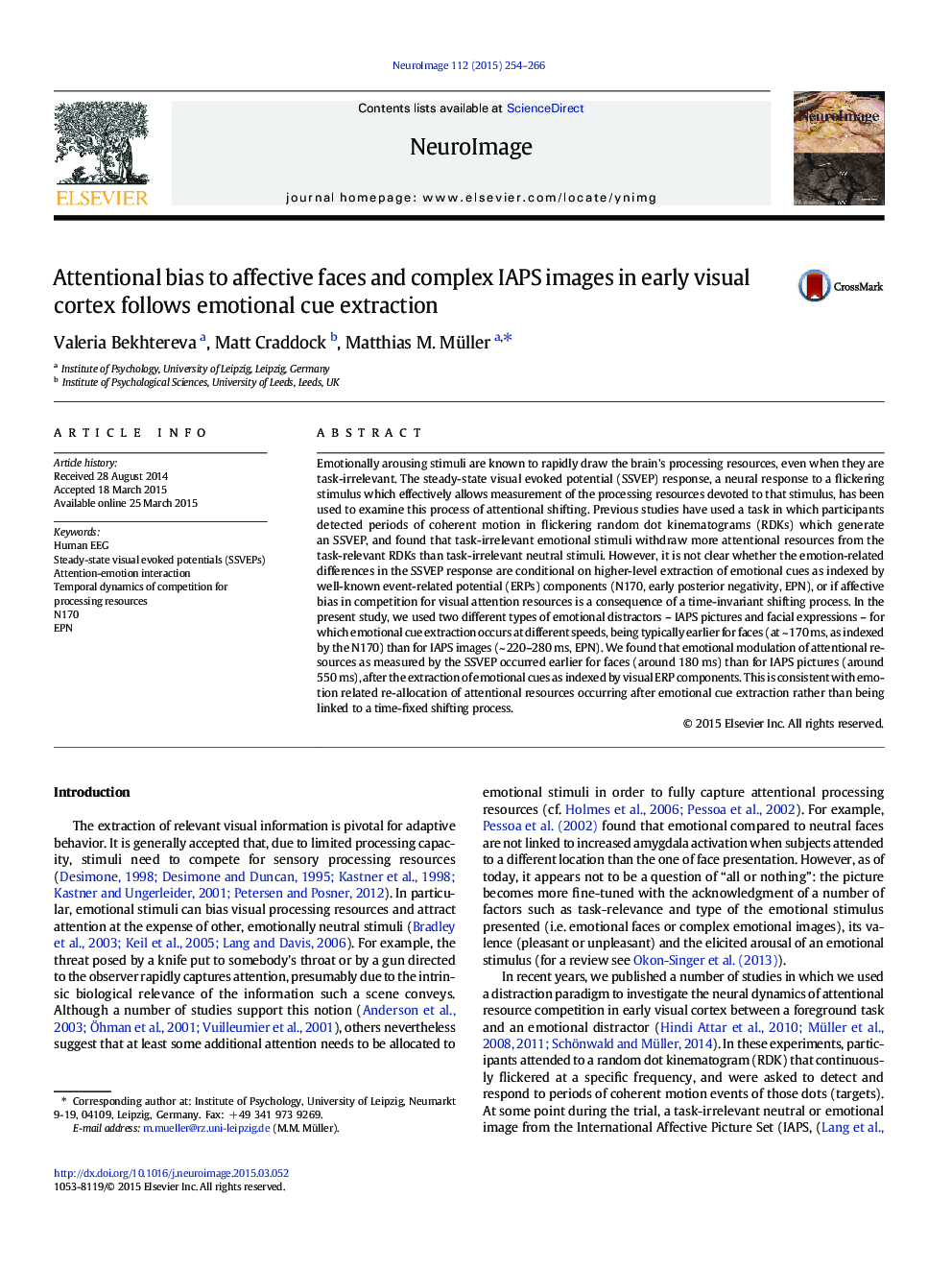| کد مقاله | کد نشریه | سال انتشار | مقاله انگلیسی | نسخه تمام متن |
|---|---|---|---|---|
| 6024968 | 1580895 | 2015 | 13 صفحه PDF | دانلود رایگان |
عنوان انگلیسی مقاله ISI
Attentional bias to affective faces and complex IAPS images in early visual cortex follows emotional cue extraction
دانلود مقاله + سفارش ترجمه
دانلود مقاله ISI انگلیسی
رایگان برای ایرانیان
کلمات کلیدی
موضوعات مرتبط
علوم زیستی و بیوفناوری
علم عصب شناسی
علوم اعصاب شناختی
پیش نمایش صفحه اول مقاله

چکیده انگلیسی
Emotionally arousing stimuli are known to rapidly draw the brain's processing resources, even when they are task-irrelevant. The steady-state visual evoked potential (SSVEP) response, a neural response to a flickering stimulus which effectively allows measurement of the processing resources devoted to that stimulus, has been used to examine this process of attentional shifting. Previous studies have used a task in which participants detected periods of coherent motion in flickering random dot kinematograms (RDKs) which generate an SSVEP, and found that task-irrelevant emotional stimuli withdraw more attentional resources from the task-relevant RDKs than task-irrelevant neutral stimuli. However, it is not clear whether the emotion-related differences in the SSVEP response are conditional on higher-level extraction of emotional cues as indexed by well-known event-related potential (ERPs) components (N170, early posterior negativity, EPN), or if affective bias in competition for visual attention resources is a consequence of a time-invariant shifting process. In the present study, we used two different types of emotional distractors - IAPS pictures and facial expressions - for which emotional cue extraction occurs at different speeds, being typically earlier for faces (at ~Â 170Â ms, as indexed by the N170) than for IAPS images (~Â 220-280Â ms, EPN). We found that emotional modulation of attentional resources as measured by the SSVEP occurred earlier for faces (around 180Â ms) than for IAPS pictures (around 550Â ms), after the extraction of emotional cues as indexed by visual ERP components. This is consistent with emotion related re-allocation of attentional resources occurring after emotional cue extraction rather than being linked to a time-fixed shifting process.
ناشر
Database: Elsevier - ScienceDirect (ساینس دایرکت)
Journal: NeuroImage - Volume 112, 15 May 2015, Pages 254-266
Journal: NeuroImage - Volume 112, 15 May 2015, Pages 254-266
نویسندگان
Valeria Bekhtereva, Matt Craddock, Matthias M. Müller,